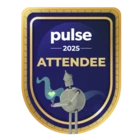Last week at Pulse, I had the incredible opportunity to share insights and strategies on running a strategic cadence call. It was an engaging session, and I want to express my gratitude to everyone who attended. The discussion was rich with valuable takeaways that I believe can benefit anyone looking to enhance their customer engagement. Here are some key points from the talk:
1. Know Your Key Stakeholders
Understanding the key stakeholders within your business is foundational. These individuals play a crucial role in decision-making processes, and tailoring your cadence calls to address their specific needs and concerns is paramount. By identifying and catering to these key players, you set the stage for more impactful conversations.
2. Drive Value Across the Customer Journey
A successful cadence call is not just about addressing immediate concerns but also about driving value across the entire customer journey. Consider the broader context of your customer's experience with your product or service. Tailor your approach to ensure that each interaction contributes positively to their overall journey, fostering long-term satisfaction and loyalty.
3. Preparation is Key
Before the call, invest time in thorough preparation. Understanding your customer in-depth not only demonstrates your commitment but also enables you to provide more tailored solutions. Knowledge is power, and a well-prepared approach increases the likelihood of a fruitful conversation.
4. Provide Value from Your Company's Standpoint
Every interaction should be an opportunity to showcase the value your company brings to the table. Clearly articulate how your product or service addresses the specific needs and challenges of your customer. This not only reinforces your brand's value proposition but also strengthens the customer's confidence in your partnership.
5. Always Send an Agenda
An agenda serves as a roadmap for the call, ensuring that both parties are on the same page regarding discussion topics. It sets expectations and allows for better preparation on the customer's end. A well-structured agenda demonstrates professionalism and respect for everyone's time.
6. Start the Call Using the A.C.E Agenda Technique
The A.C.E (Appreciate, Confirm time, Set end goal - Confirm Agenda) technique is a powerful way to initiate the conversation. Appreciate the customer and be human first, confirm time so that you can adjust agenda, and clearly state the end day to foster collaboration. This structured approach fosters a positive and productive dialogue from the outset.
7. Always Follow-Up
The conversation doesn't end when the call concludes. Following up is a critical step to provide additional value and address any lingering questions or concerns. This post-call engagement demonstrates your ongoing commitment to customer success and reinforces the partnership.
In conclusion, mastering the art of strategic cadence calls involves a combination of preparation, understanding, and ongoing commitment. By incorporating these key takeaways into your approach, you can elevate your customer engagement and contribute to long-term, mutually beneficial relationships.
Thank you again to everyone who joined the discussion at Pulse. What would everyone else add to this?
